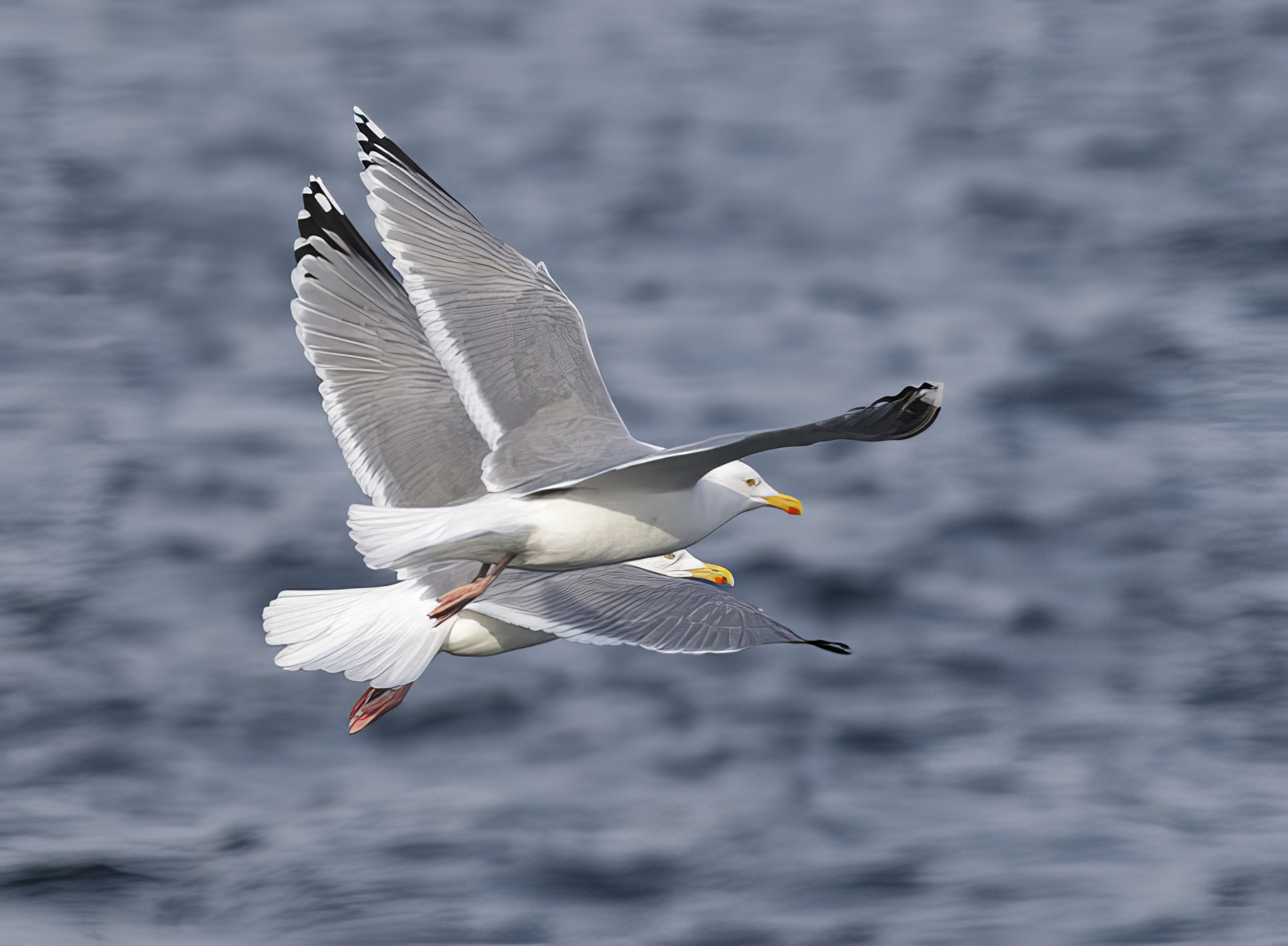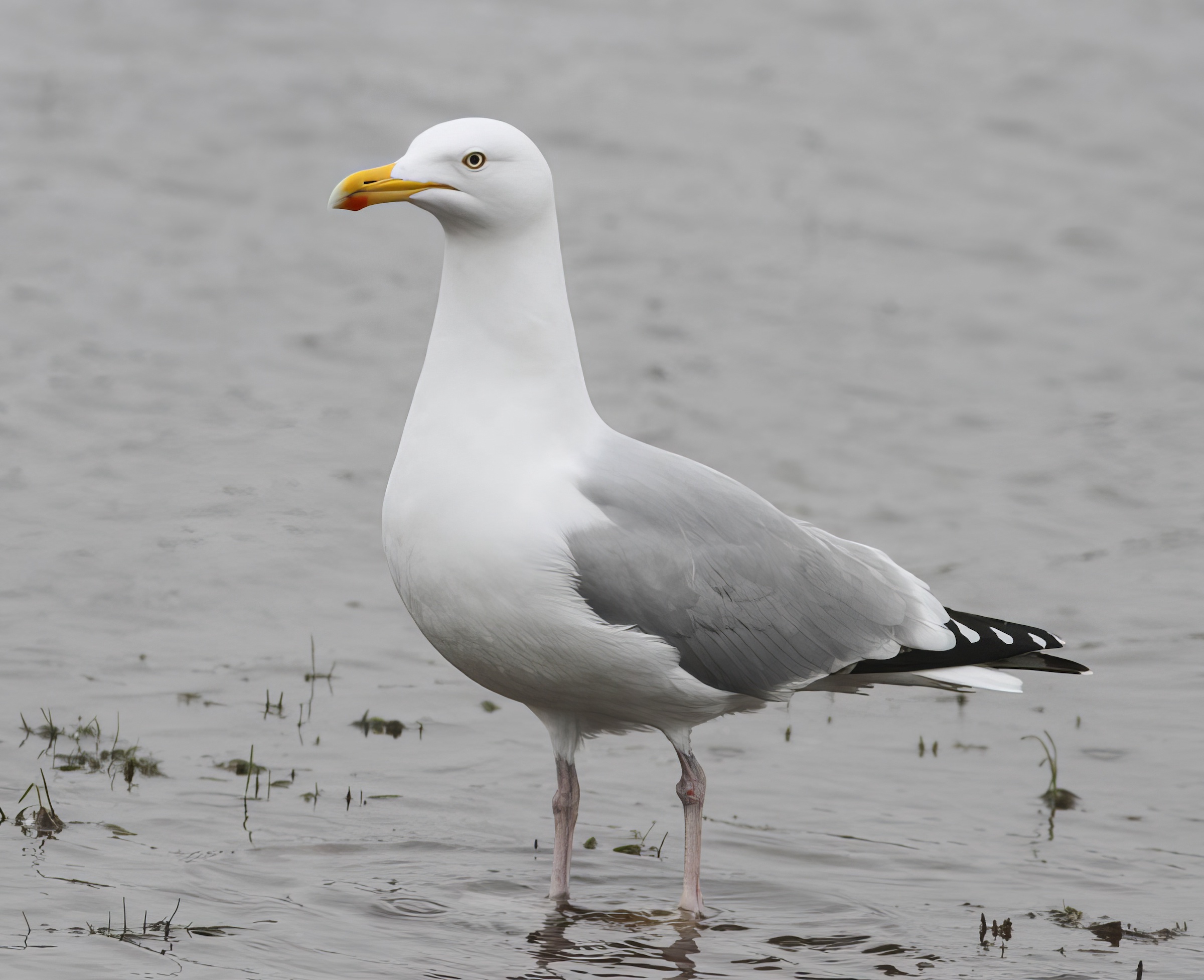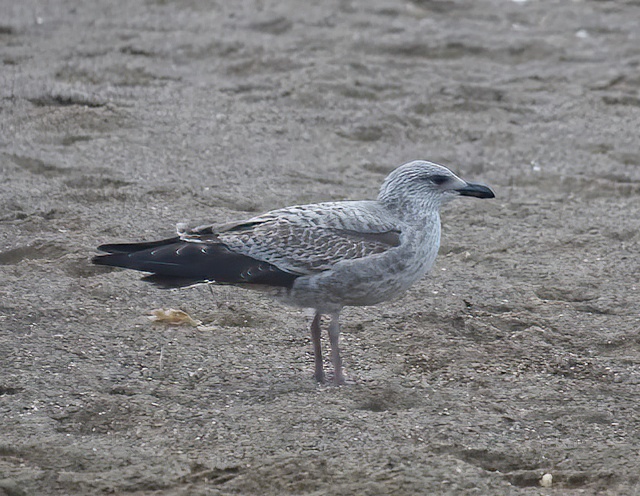Herring Gull Larus argentatus
British form L.a. argenteus a common passage migrant and winter visitor; fairly common and increasing breeding species. Nominate northern European form L.a. argentatus a fairly common winter visitor.



There was no evidence of Herring Gull breeding during the Atlas period from 1980 to 1989 but by the time of the BTO Atlas of 2007–2011 it had colonised at least seven 10km squares in Lincolnshire, principally in Grimsby, Skegness and Boston. That spread has continued and it is now breeding in inland towns like Louth. Flat roofed factory and warehouse buildings and old houses with tall chimney stacks and pots are preferred nesting locations. For birders, as a red data species it may be a positive addition to the day list but for many householders the raucous pre-dawn calls are less than welcome and some chimney stacks now sport gull repellent netting. Ironically, prior to it's recent spread it had started to become a rare bird at many inland sites because of the closure of open domestic refuse tips. There is no current accurate estimate of the breeding population, but it is well above 100 pairs. The wintering population is also poorly counted and the current WeBS Online figures of some 8,500 are likely to be an underestimate. The majority of Herring Gulls recorded in Lincolnshire are ringed at a landfill site in York. Sightings of the York birds have tended to be on the east of England with a large number from Scarborough. Over 50 have been seen in The Netherlands, Belgium and France. One Dutch ringed bird, Green YBPJ, was first seen at Middlemarsh Farm on September 23rd 2014 having been ringed on Forteiland, Ijmuiden on June 2nd 2014. It returned to Middlemarsh Farm again in 2018. It would appear from colour-ring sightings that some Herring Gulls remain faithful to a certain area but also indicate that dispersing birds tend to head off between north-east and south of where they were ringed.
(Account as per new Birds of Lincolnshire (2021), included September 2022)